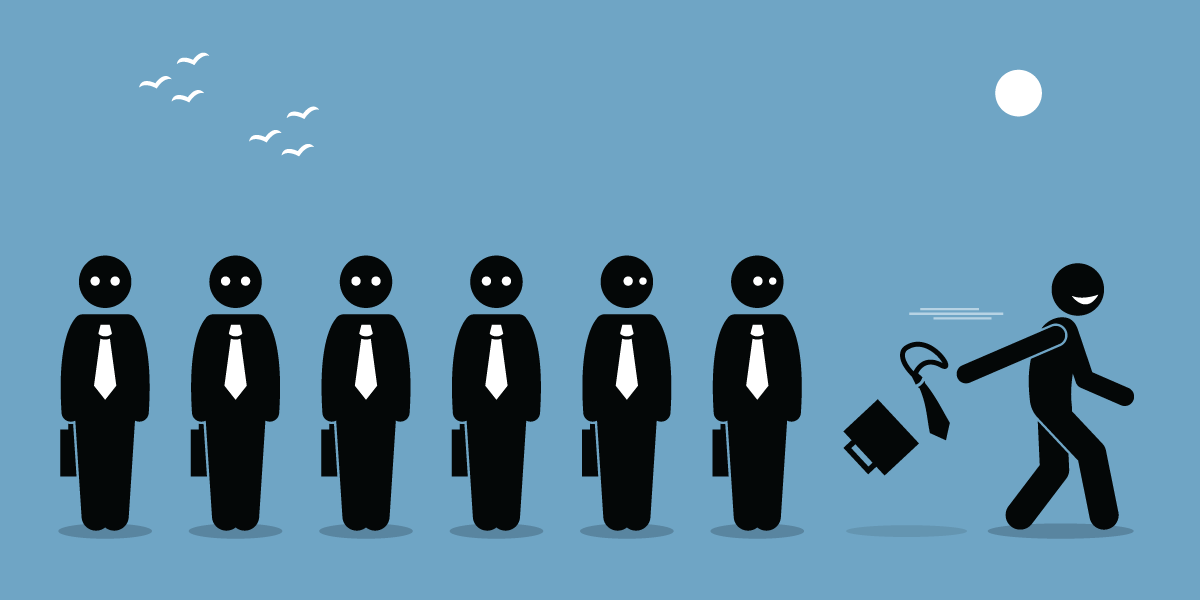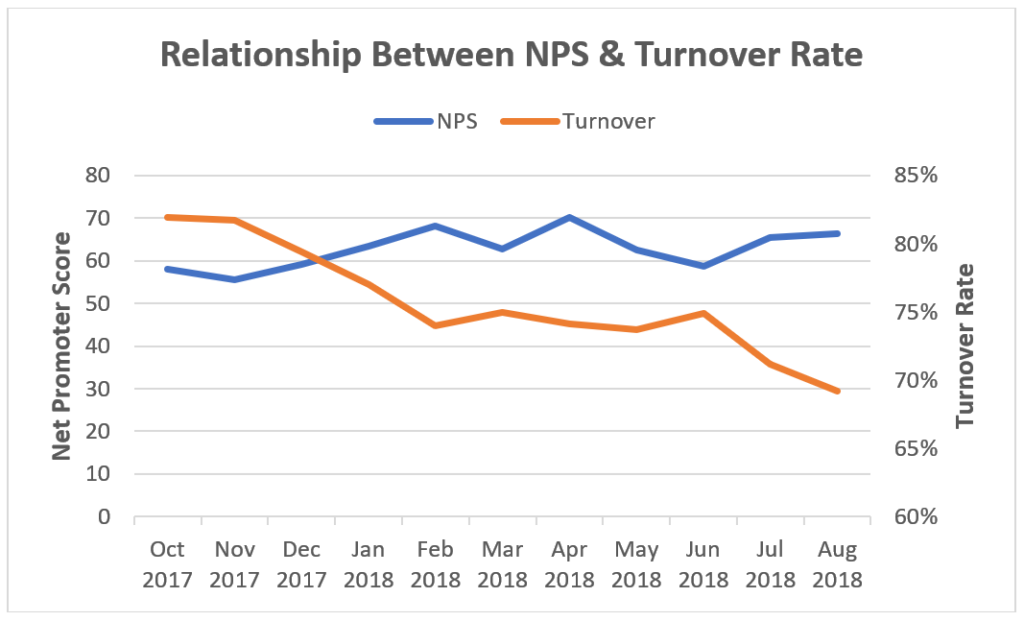
One of the most effective tactics for improving the customer experience (CX) is also among the least glamorous.
For all of the management attention focused on “shiny object” CX strategies (such as digital transformation, artificial intelligence, predictive analytics, etc.), it’s the simple influence of employee turnover that can make or break a company’s customer experience.
I was reminded of this in a recent client engagement where we looked at the correlation between the company’s employee turnover rate and its Net Promoter Score (“NPS,” a widely-used measure of customer experience quality).
As the graphic below illustrates, we found a rather striking relationship between these two measures (something we’ve observed at other firms, as well):

For this particular company, the NPS and Turnover trends were like mirror images of one another. When turnover fell, NPS rose. When turnover rose, NPS fell. (For the statisticians out there, in this example, the two measures had a strong negative correlation of 0.74.)
What accounts for this connection between employee turnover and customer experience? It boils down to three factors:
- Focus. In a high turnover environment, a business’ focus necessarily shifts from development to survival. Management doesn’t have the luxury to concentrate on things like customer experience, because they’re consumed with the Sisyphean task of filling staffing gaps as quickly as they’re created.
- Fitness. By definition, a high turnover workforce is a less experienced workforce. Newly hired employees may be good people, but they will lack the expertise and competence of more seasoned staff. As a result, the workforce’s overall fitness to effectively serve customers is compromised.
- Familiarity. In many types of businesses, customers like working with familiar faces – the retail clothing store associate who knows my style, the insurance agent who knows my coverage needs, the auto mechanic who knows my car. In these relationship businesses, high turnover is jarring to the customer because they crave consistency, but are forced to deal with new employees time and time again.
To put the impact of turnover in perspective, consider the retail industry, where (according to the National Retail Federation) the average employee turnover rate is a little over 60 percent.
That means if you’re a store manager, every year you’re replacing almost two-thirds of your staff. Think about the effect that has on how quickly and competently employees are able to serve customers. It’s a huge issue made bigger by the fact that many companies don’t have very good training programs for new staff.
It comes as little surprise, then, that organizations known for excelling in customer experience also tend to exhibit below average employee turnover (Costco, Publix, Wegmans, USAA and Southwest Airlines among them).
Also instructive is the experience of big-box retailer Best Buy, which, under the direction of CEO Hubert Joly, not only defied predictions of an Amazon-fueled demise – the company actually thrived, outperforming the S&P 500 Index by a 3-to-1 ratio over the past five years.
Best Buy’s turnaround can be attributed to a variety of actions pursued by Joly. One, however, was a renewed commitment to improve the employee experience and reduce turnover.
The company invested in new training programs for its workforce. They conducted hundreds of interviews with employees to identify impediments they faced in their jobs (such as slow point-of-sale systems). They deployed new technology to make it easier for employees to focus less on the customer transaction, and more on the customer interaction.
Through these and other workplace improvements, Best Buy managed to reduce their employee turnover by more than 30%, bringing it down to less than half of the retail industry average. That has translated into more engaged and experienced retail staff, who in turn are better equipped (and more motivated) to deliver an experience that keeps customers returning to the store.
The minimization of employee turnover may not be the most glamorous and exciting of customer experience strategies, but it is a critical one. When business leaders neglect to manage turnover effectively and address its root causes, it inevitably sows the seeds for future customer experience failure.
The key is to hire the right people, to be deliberate in onboarding and training them, and to equip them with the tools and knowledge needed for success.
Such a focus on the employee experience helps improve engagement and reduce turnover. And that’s critical to any company’s success, because if your employees keep heading for the exits, your customers will soon follow.
Jon Picoult is the founder of customer experience advisory firm Watermark Consulting. As a consultant and a speaker, he’s worked with the CEOs and executive teams of some of the world’s top brands. Follow Jon on Twitter or Subscribe to his monthly eNewsletter.